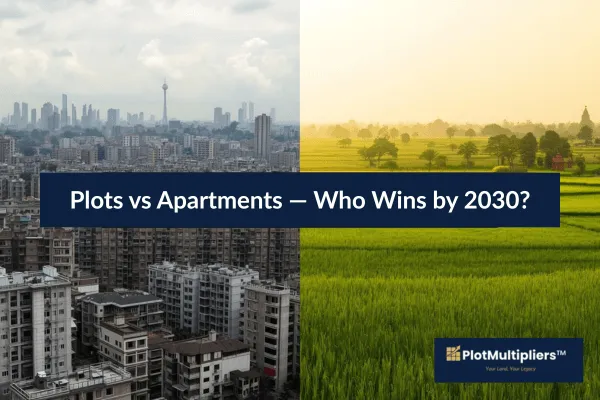
Vrindavan Plots vs Apartments: 7 Reasons Land Wins by 2030
Introduction
India’s property market is shifting — and Vrindavan land is taking the lead. While apartments in metros struggle with plateauing price growth (6–7% yearly), Vrindavan has been enjoying steady double-digit gains and enjoying rare long-term momentum. Think of owning a legacy asset, not just a flat. Here are 7 compelling reasons Vrindavan plots will outperform apartments by 2030.
1. Sustained High Appreciation
Vrindavan land prices have appreciated 15–20% per year over the past five years.
Urban flats hover around just 6–7% annual growth, limiting returns.
2. No Maintenance Hassles
Apartments come with monthly maintenance, repair costs, and aging infrastructure.
Plots offer minimal upkeep, making them cost-effective in the long run.
3. Cultural & Spiritual Premium
Plots in Vrindavan come with spiritual prestige — proximity to ISKCON University, temples, and pilgrim zones.
Apartments in cities lack this meaningful connection.
4. Custom-Build Freedom
With VR land, you can design according to your lifestyle — retirement villa, guesthouse, temple.
Apartments come with fixed layouts — no personalization allowed.
5. Growing NRI & Domestic Demand
Rising NRI interest and domestic buyers seeking retirement/second homes are fueling Vrindavan demand.
Apartment markets are highly competitive with less cultural pull.
6. Government-Backed Infrastructure
Investments like Banke Bihari Corridor, Heritage City Project, and improved NH2 highways are boosting land value.
Metros suffer from infrastructure fatigue and saturation.
7. High Rental & Resale Potential
Religious tourism and proximity to spiritual zones open rental income streams (7–10% returns).
Apartments often face high vacancy rates and slow resale cycles.
Final Takeaway
As apartments in metros plateau, Vrindavan plots continue to soar — backed by growth, customization, low holding cost, and cultural appeal. By 2030, Vrindavan land is poised not just to match, but to outperform city flats consistently.
